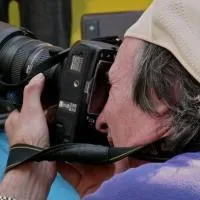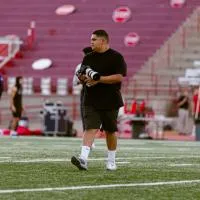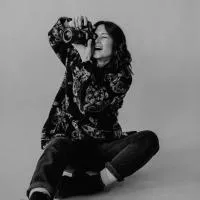Here’s an interesting set of SEO-related questions I received from a photographer recently (location changed for anonymity):
Hey Alex,
I enjoy your articles and emails, thank you for providing this resource.
I have a couple of questions for you regarding best practices:
How would you target a keyword phrase that’s a bit awkward? An example would be the generic, localized phrase “Cheyenne photographers” which gets a decent amount of traffic for the area (let’s say I’m based in Cheyenne, Wyoming).
As an individual photographer, I find it awkward to try to naturally include that exact phrase in either title or body. I also generally find it difficult to target “photographer” in any manner while mainly talking about “photography”.
When targeting keyword phrases such as the above on a page, do you include it as the target keyword (or its variations) in the images on the page, too? Or should images only have keywords associated with what is visually represented in the image, even if that isn’t my target? For example, I’m currently building a new website that implements more text, as my current website is just a portfolio-style site. For images on the homepage, which exist essentially as part of the design (like a large hero image with a headline on top of it), should I target the site’s main keyword(s) in the image or treat the image separately?
Another example could be the images in a particular portfolio, say a commercial photography portfolio. The goal of the page would be to attract clients looking to hire a photographer to provide the service of commercial photography – what treatment would you give the images (filename, title, alt, caption) in the portfolio to achieve that goal?
I am also curious to see an example of how you would have the Title, Description, H1, H2, images, and body all work together to target a keyword on a page. My natural instinct is to try to target the keyword everywhere, so I’m probably guilty of overuse.
Thanks!
Quite a lot of juicy SEO stuff to unpack there, so let’s get right to it.
First of all, a “[LOCATION] photographer” keyphrase is not “weird” or “awkward” at all. If your target audience uses it on Google, then it’s perfectly legit.
Trying to rank for your specialty and/or your location is actually the bread-and-butter of SEO efforts for most photographers.
Unless you’re based in funny places and you need to rank for “Accident photographer” or “Chicken photography” :-)
You might find it uncomfortable to use that exact “[location] photographer” keyphrase directly on your pages EVERY SINGLE TIME, of course; you might feel you can’t write it, organically, in your copy. But maybe we just need to loosen up that expectation that you need to do that in the first place.
When it’s difficult to include a target keyphrase into your content (because it sounds awkward), here are some strategies you can use:
1. Use variations/inversions.
Try to convert the keyphrase into something that sounds more natural. So if you feel you can’t naturally use “Cheyenne photographer(s)”, then try working in other variations: “photographer in Cheyenne”, “Cheyenne photography services”, “photo(graphy) services in Cheyenne”.
2. Use the words separately.
Don’t forget that just using “Cheyenne” and “photographer(s)” in the same phrase, even if they’re not together, is still better than nothing. Google’s algorithms are smart enough these days to infer meaning from the whole text, instead of just doing a perfect phrase match.
3. Show your “weird” keyphrase only to Google
Incorporate the awkward-sounding keyphrases into pieces of content that don’t show up visually on the page, so that they don’t affect your usual readers.
Image ALT tags immediately come to mind for this. Or the SEO meta-description (which only shows up in Google search results).
But I do NOT endorse writing “keyword-rich copy” that you visually hide from the site using CSS code. Google doesn’t like site owners wearing black hats.
Using images to help target your target keyphrase
Regarding using images to help with SEO: yes, if you want to truly optimize a page/site for a specific keyword/phrase, you should indeed try to include the relevant words in the images on the page too (in the ALT tags of those images).
But again, you shouldn’t go overboard here either. It’s definitely wrong to completely ignore the actual image contents and just “spam” the image metadata with keywords.
So only do it discreetly, maybe just include the location and not that whole “Cheyenne photographer(s)” keyphrase because that can start sounding fake when overdone.
Homepage images (or other graphics that are part of the site design) can indeed be considered small opportunities to add some keywords in the ALT tags, yes. Within reason.
A hero images, sure.
A small decorative line acting as a visual separator, just ignore it.
For images in a portfolio, you have to find the right balance between actually describing the photo but also including some of your target keywords. There’s no clear rule here, it’s done on a case-by-case basis.
With ALT tags, the balance can be more towards keywords (because that’s mainly content that you’re giving to Google to “digest”).
With metadata that’s displayed visually on the page for humans to see (title and/or caption, depends on your theme), lean towards natural language, less optimization.
What about using filenames for SEO?
As for filename, since they can’t be too long (aim for around 4-5 lowercase words separated by dashes), just describe the photo and maybe just include 1 or 2 keywords.
Let’s take a few examples:
- “cheyenne-commercial-photography-wyoming-state-museum.jpg” is a bit overdone for my taste
- “wyoming-state-museum.jpg” is descriptive but maybe an SEO opportunity lost
- “wyoming-state-museum-commercial-photography.jpg” sounds about right to me
And with all possible image metadata: ideally, try to make them unique. Copy-paste is your enemy here.
Recap: how to optimize a portfolio page for “[LOCATION] photographer”
1. The URL for the entire page should, of course, be something relevant like:
domain DOT com/commercial-cheyenne-photography/
2. H1 on the page should be “Commercial photography services in Cheyenne”
3. Then the portfolio page itself should have some text (maybe 2-3 paragraphs), above the thumbnails, describing what the page is all about. Parts of this text can use H2 and/or H3 heading tags if needed while controlling the look of the text so it doesn’t look too large or messy.
4. Each image on the portfolio page should then have a correct filename, e.g. “wyoming-state-museum-commercial-photography.jpg”, and some relevant metadata (ALT tag + title and/or caption, describing the image contents).
Notice I’m not using “photographer” in the individual image details, even though that’s the ideal keyword to rank for, because it would be an accurate representation of the photos. It’s all about honesty. The’s no photographer in the picture. It’s OK to use “photography” in cases like this, Google will infer meaning. Only try to use “photographer” in the SEO meta-description and in the page copy text (where you write about yourself).
Closing thoughts
Don’t be so strict about the exact phrases that you want to rank for (like “commercial portrait photographer”). It’s OK to be more flexible with how you write (“commercial portraits”, “commercial photography”, “portrait images for commercial…”, etc.)
SEO is not just about doing an absolutely perfect job with tags & keywords, it’s easy to over-do it. Keep your website sounding more natural, and focus on other off-site SEO efforts sometimes (like getting more backlinks).
There are tons of famous photography websites out there that have abysmal on-site SEO, with really big SEO mistakes. Yet they’re still highly successful (because of the quality of their work, which brings them more links/press).













